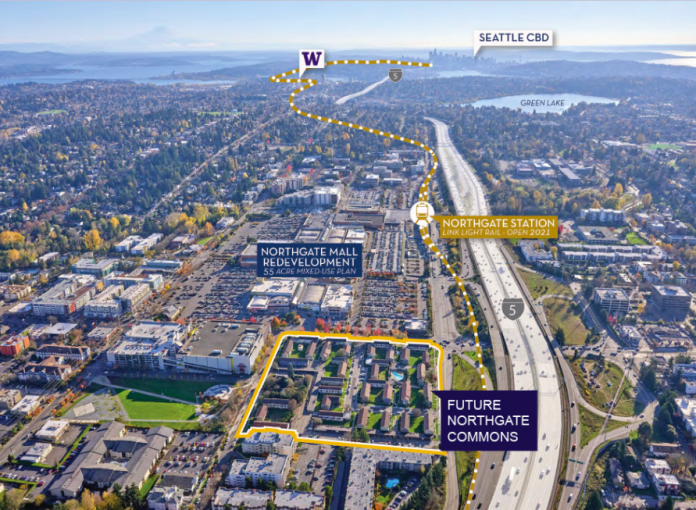
In the mid-20th century, Northgate Mall was considered to be one of the most ambitious commercial developments in North America, if not the world. The “Fabulous Northgate” may not have actually been the world’s first suburban shopping center or climate-controlled indoor mall, but it was certainly among the earliest constructed, and its design, which provided thousands of parking spaces separate from a pedestrianized shopping area where visitors could wander from store to store, heavily influenced the concept of the classic American shopping mall as we know it today.
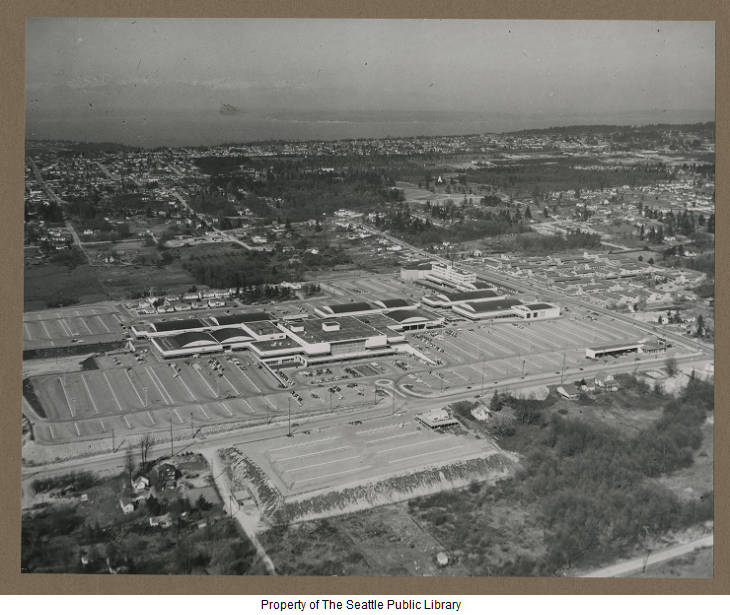
Today, however, a stroll through the mostly shuttered remains of Northgate Mall reveals an institution and neighborhood sitting on the precipice of major change. Much of the existing mall stands shuttered as construction crews labor away at the Northgate’s reinvention as the site of a new Link light rail station and National Hockey League training facility, both expected to open in 2021, along with the much anticipated Northgate Bicycle and Pedestrian Bridge, which will span across Interstate 5 to connect these sites to North Seattle College and the Licton Springs neighborhood.
While plans for King County to build transit-oriented affordable housing on the site of a 5.7-acre former parking lot and bus depot have stalled, Seattle Mayor Jenny Durkan and Seattle Housing Authority (SHA) Executive Director Andrew Lofton announced the intention to partner on transforming 8.5 acres of property into a mixed-income community near the Northgate light rail station this week.

“Equitable transit-oriented development, like the one imagined at Northgate, advances the City’s vision to build an inclusive and connected Seattle for generations to come,” said Emily Alvarado, Director of the Seattle Office of Housing. “In a high-priced, highly competitive market like Seattle, securing strategic properties, like this, ensures our ability to create quality, affordable homes for low and moderate incomes families near transit, schools and jobs.”
Securing the property came at the cost of $65 million paid to previous property owners the Mullally Development Corporation who own and operate several apartment complexes throughout Seattle and beyond. During the announcement, Mayor Durkan praised the Mullally family’s “commitment to our region,” thanking them for selling the land to the City at below market rate. “This [property] is a hub for all of Seattle, and to be able to get [it] for the future to make sure that it’s a place where people from throughout Seattle can live affordably is remarkable,” Mayor Durkan said.
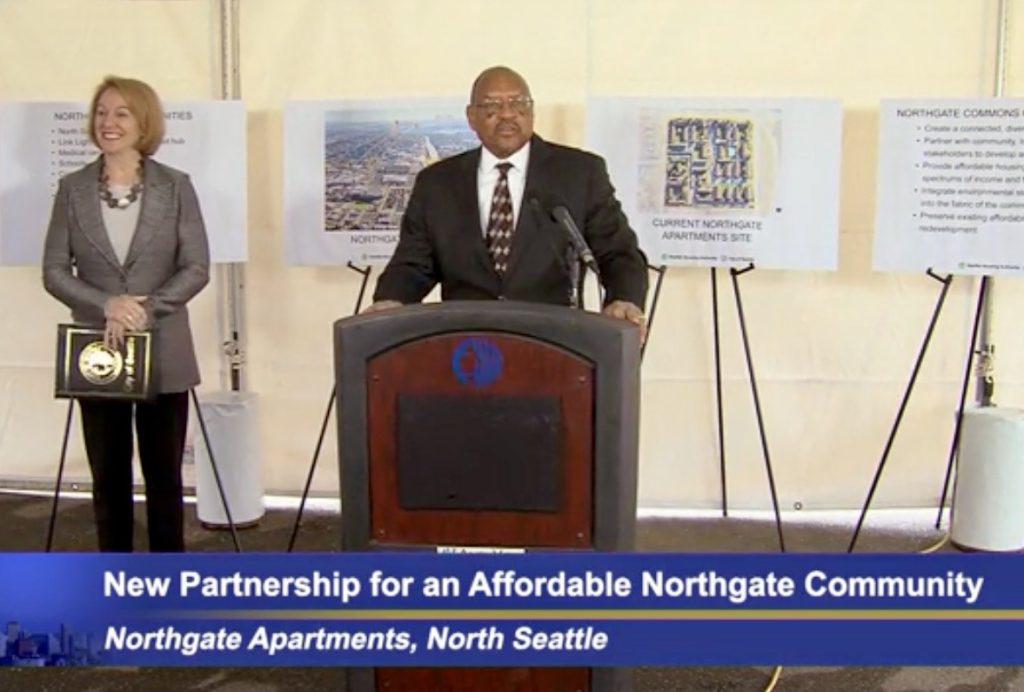
Acquisition of the future Northgate Commons site was paid for with funding from last year’s sale of the Mercer Megablock property in South Lake Union, which generated approximately $110 million for affordable housing investment in Seattle.
What could “equitable development” at Northgate Commons look like?
According to SHA’s website, there are no “immediate plans or a timeline for any change” at the 8.5-acre site, on which 211 units of unsubsidized affordable housing are presently located. For existing residents, SHA has committed to keeping rents affordable, and the agency has also declared that “no residents are being asked to move in the near future.”
Over the next year, SHA and City of Seattle will collaborate on a long-term planning process to secure funding and develop a master plan for Northgate Commons. Similar to other SHA mixed-use and mixed-income communities, such as High Point, Rainier Vista, New Holly, and Yesler Terrace, the future Northgate Commons site in addition to affordable housing future development is expected to include community and social services, and market-rate housing and businesses.
Before deciding to sell the land to the City, the Mullally family contemplated developing the property, and back in 2009 a group of Portland State University created a development scenario called The Blocks at Northgate, which envisioned 683 workforce rental housing units and commercial spaces distributed among five mid-rise buildings.
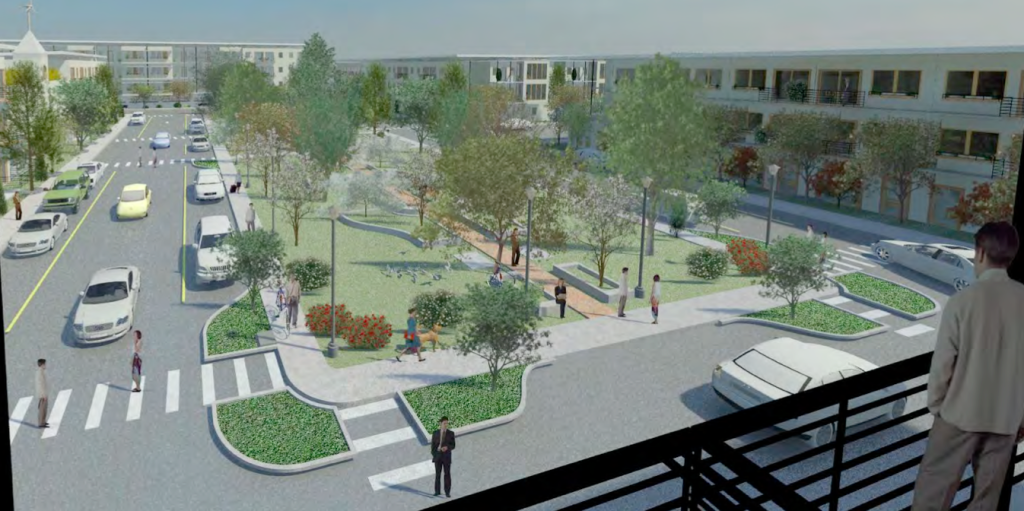
Created well before the beginning of Seattle’s current affordable housing crisis, The Blocks at Northgate demonstrated a vision of a moderately dense landscape punctuated by courtyards and centered on a large village green. The proposal may have spurred the Mullally family’s interest in changing the zoning from Midrise Residential (MR) to Neighborhood Commercial 3 with an 85-foot height limit (NC3-85), a change that the City agreed to make in 2012 with the caveat that any future development on the site include affordable housing. Zoning on the property now allows for even more intensity.
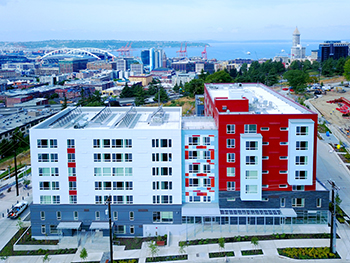
The zoning changes have opened the door to denser housing along with commercial spaces and community amenities to develop on the site. Big questions still exist as to how much housing will be created and to what level that housing will be affordable. The City should be sharing information about ways to learn more about the future of Northgate Commons and participate in community engagement around its planning and design in the coming months.
Natalie Bicknell Argerious (she/her) is a reporter and podcast host at The Urbanist. She previously served as managing editor. A passionate urban explorer since childhood, she loves learning how to make cities more inclusive, vibrant, and environmentally resilient. You can often find her wandering around Seattle's Central District and Capitol Hill with her dogs and cat. Email her at natalie [at] theurbanist [dot] org.

